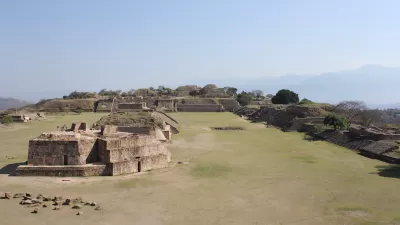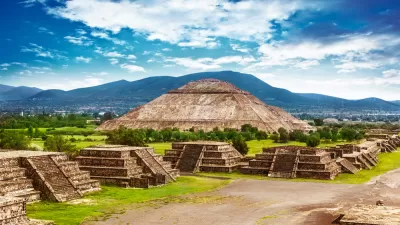The newly unearthed "golden city" sheds light on everyday life at the height of ancient Egypt's power.

A newly rediscovered "lost city" in Luxor is Egypt's most significant finding since Howard Carter unearthed King Tutankhamen's tomb in 1922, reports Sudarsan Raghavan for the Washington Post. The city is "believed to have been founded by King Amenhotep III, the ninth king of ancient Egypt’s 18th dynasty who ruled the country from 1391 to 1353 B.C.," and is possibly the largest administrative and industrial settlement of the time, an era when ancient Egypt was at the height of its wealth and power.
"The original goal of the mission was to find King Tutankhamen’s mortuary temple." Instead, the archaeologists found an entirely new city filled with buildings and artifacts that will help Egyptologists learn more about daily life in ancient Egypt. "The archaeological team dated the settlement through hieroglyphic inscriptions found on wine vessels, as well as rings, scarabs, pottery and mud bricks bearing the seals of King Amenhotep III’s cartouche."
The team has identified several specialized buildings and areas including a bakery and food storeroom, a craft workshop, and a fortified residential district. A cemetery is located north of the city, although the bodies of two cows and one human have been found within city buildings, leading to questions about social practices.
Luxor, known in ancient times as Thebes and the capital of then-Upper Egypt, is still a bustling city of over a million people today.
FULL STORY: A 3,000-year-old ‘lost golden city’ has been unearthed in Egypt

Planetizen Federal Action Tracker
A weekly monitor of how Trump’s orders and actions are impacting planners and planning in America.

Restaurant Patios Were a Pandemic Win — Why Were They so Hard to Keep?
Social distancing requirements and changes in travel patterns prompted cities to pilot new uses for street and sidewalk space. Then it got complicated.

Map: Where Senate Republicans Want to Sell Your Public Lands
For public land advocates, the Senate Republicans’ proposal to sell millions of acres of public land in the West is “the biggest fight of their careers.”

Maui's Vacation Rental Debate Turns Ugly
Verbal attacks, misinformation campaigns and fistfights plague a high-stakes debate to convert thousands of vacation rentals into long-term housing.

San Francisco Suspends Traffic Calming Amidst Record Deaths
Citing “a challenging fiscal landscape,” the city will cease the program on the heels of 42 traffic deaths, including 24 pedestrians.

California Homeless Arrests, Citations Spike After Ruling
An investigation reveals that anti-homeless actions increased up to 500% after Grants Pass v. Johnson — even in cities claiming no policy change.
Urban Design for Planners 1: Software Tools
This six-course series explores essential urban design concepts using open source software and equips planners with the tools they need to participate fully in the urban design process.
Planning for Universal Design
Learn the tools for implementing Universal Design in planning regulations.
Heyer Gruel & Associates PA
JM Goldson LLC
Custer County Colorado
City of Camden Redevelopment Agency
City of Astoria
Transportation Research & Education Center (TREC) at Portland State University
Camden Redevelopment Agency
City of Claremont
Municipality of Princeton (NJ)





























